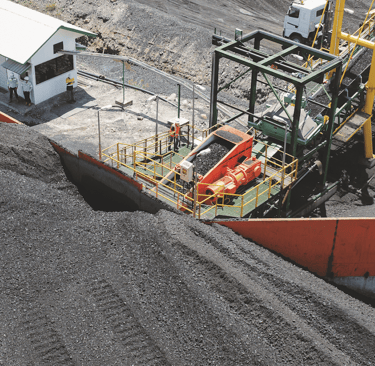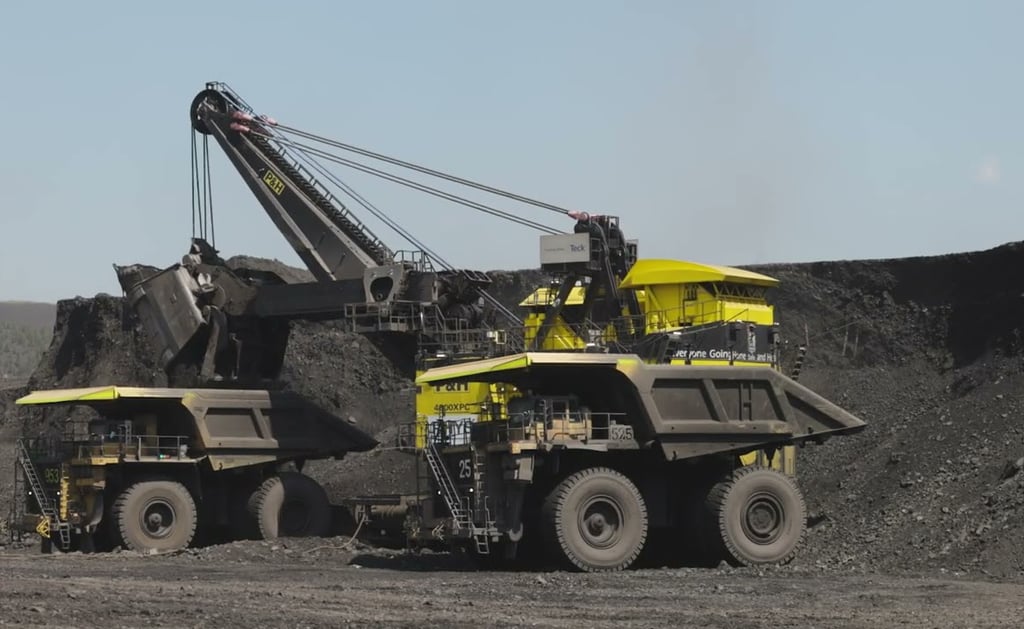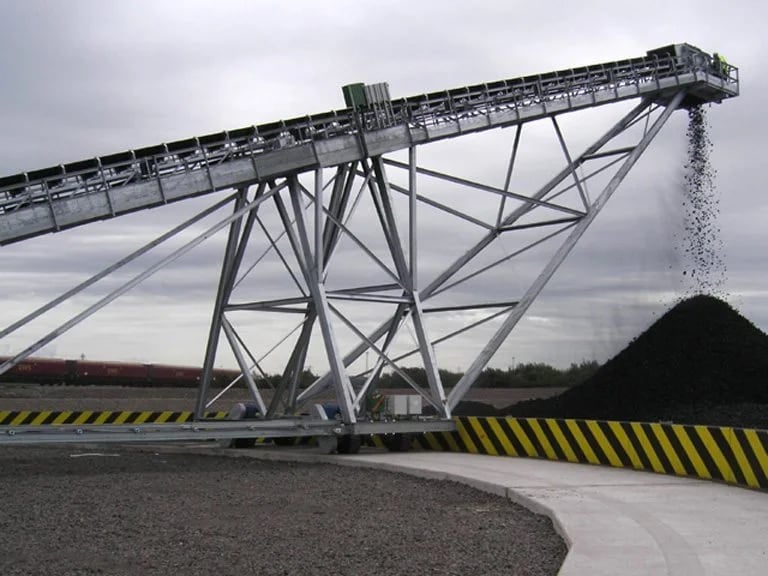Anhui Feichun Special Cable Co.,Ltd Li.wang@feichuncables.com
How Does the Type 66 Mining Trailing Cable Revolutionise Safety and Efficiency in South Africa's Most Demanding Underground and Open-Cast Mining Operations?
Discover why the Type 66 mining trailing cable (3.8kV-6.6kV) is the preferred SANS 1520-compliant solution for South African mines, offering unmatched durability, safety, and performance in harsh mining conditions across Mpumalanga, Limpopo, and KwaZulu-Natal coalfields.
Li.wang@Feichun Cable
7/25/202511 min read


Minng Demands and Cable Solutions
South Africa's mining industry stands as the backbone of the nation's economy, with operations spanning from the platinum-rich Bushveld Complex in Limpopo to the extensive coalfields of Mpumalanga and the diverse mineral deposits across KwaZulu-Natal. These mining environments present some of the world's most challenging conditions for electrical infrastructure, where equipment must withstand extreme temperatures, mechanical stress, chemical exposure, and constant movement.
The recent focus on mining safety following incidents in various South African mines has highlighted the critical importance of reliable electrical systems. In 2024, the Department of Mineral Resources and Energy emphasised stricter compliance with safety standards, particularly regarding electrical installations in hazardous mining environments. This regulatory push has made the selection of appropriate mining cables more crucial than ever.
Enter the Type 66 Mining Trailing Cable – a specialised high-voltage mining cable engineered specifically for the demanding conditions of South African mines. This robust electrical solution represents the pinnacle of mining cable technology, designed to power mobile mining equipment whilst maintaining the highest safety standards required by SANS 1520-1 regulations and NRCS approval processes.
The Type 66 cable serves as the electrical lifeline for draglines, shovels, continuous miners, and other mobile equipment that forms the heart of modern mining operations. Its importance cannot be overstated: when mining operations depend on continuous power delivery to equipment worth millions of rand, cable failure is simply not an option.
What Is the Type 66 Mining Trailing Cable?
The Type 66 trailing cable represents a sophisticated engineering solution designed specifically for 3.8 kV to 6.6 kV applications in mining environments. Unlike standard industrial cables, this SANS approved cable is purpose-built to withstand the unique stresses of mining operations, where cables must trail behind moving equipment across rough terrain whilst maintaining electrical integrity.
At its core, the Type 66 features a flexible Class 5 tinned copper conductor that ensures optimal conductivity even under constant flexing. The conductor is surrounded by ethylene propylene thermosetting insulation (RD 3 type complying with SANS 1411-3), which provides excellent electrical properties and resistance to environmental degradation. This triple-extruded insulation system includes a semi-conducting core screen that ensures uniform electric field distribution, critical for preventing electrical breakdown in high-voltage applications.
The cable's construction reflects decades of mining industry experience. Three screened power cores are arranged with three unscreened pilot cores, all laid up around a semi-conductive filler centre. This configuration provides both power transmission and control capabilities in a single cable assembly. For applications requiring earth continuity monitoring, one pilot core can be replaced with an Earth Continuity Conductor (ECC), enhancing safety compliance.
What sets the Type 66 apart is its remarkable flexibility combined with extreme durability. The polychloroprene thermosetting compound outer sheath (RS 6 type) provides exceptional resistance to abrasion, tearing, oils, and flame propagation. The bonded inner and outer sheaths create a unified structure that delivers superior torsional protection – essential when cables undergo constant twisting during equipment operation.
Technical Specifications and Electrical Parameters
Understanding the technical specifications of the Type 66 mining trailing cable is crucial for proper application in South African mining operations. The cable is available in conductor sizes ranging from 25mm² to 240mm², accommodating various power requirements from smaller mobile equipment to large draglines and shovels.
Physical Properties:
Conductor Sizes: 25, 35, 50, 70, 95, 120, 150, 185, 240 mm²
Maximum Wire Diameter: 0.41mm (up to 50mm²), 0.51mm (70mm² and above)
Approximate Cable Diameter: 50.1mm to 83.1mm (depending on conductor size)
Cable Mass: 3.8 kg/m to 14.1 kg/m (Type 66), 3.9 kg/m to 14.5 kg/m (Type 66 ECC)
Minimum Bending Radius: 430mm to 740mm
Maximum Recommended Tension: 1.1 kN to 10.8 kN
Electrical Characteristics:
Voltage Rating: 3.8/6.6 kV
Operating Temperature: -25°C to +90°C (conductor temperature)
Pilot Core Sizes: 10mm² (for smaller conductors), 16mm² (medium), 25mm² (larger conductors)
ECC Sizes (when applicable): 16mm² to 120mm²
Screen Cross-section: 28mm² to 50mm² (weighing method)
The cable's construction includes a braided tinned copper wire screen with a 60% filling factor, ensuring effective electromagnetic shielding and providing a low-impedance return path for fault currents. This screening is particularly important in mining environments where electromagnetic compatibility must be maintained despite the presence of heavy electrical machinery.
Temperature performance is critical in South African mining conditions, where ambient temperatures can vary dramatically between surface operations and deep underground workings. The Type 66's operating range from -25°C to +90°C ensures reliable performance across all South African mining environments, from the cold winter mornings in the Highveld to the intense heat of deep underground operations.
Key Advantages of Type 66 in South African Mines
The Type 66 mining trailing cable offers several distinct advantages that make it particularly suitable for South African mining conditions. These benefits directly address the challenges faced by local mining operations and contribute to improved safety, efficiency, and cost-effectiveness.
Exceptional Flexibility and Durability South African mines, particularly those in the Witwatersrand Basin and Mpumalanga coalfields, require equipment that can navigate challenging terrain and tight underground spaces. The Type 66's Class 5 flexible conductor construction ensures smooth operation even with frequent bending and flexing. The lay ratio of maximum 20 times the pitch circle diameter optimises flexibility whilst maintaining structural integrity.
Resistance to Environmental Hazards Mining operations in South Africa face unique environmental challenges, from the corrosive effects of mine water to exposure to various chemicals used in ore processing. The Type 66's polychloroprene sheath provides excellent resistance to oils, acids, and alkalis commonly encountered in mining environments. Its UV resistance is particularly valuable for open-cast operations in South Africa's intense sunlight.
Enhanced Safety Features Following recent safety initiatives by the Department of Mineral Resources and Energy, mining companies are prioritising equipment that exceeds basic safety requirements. The Type 66's flame-retardant properties help prevent fire propagation – critical in environments where methane or coal dust may be present. The cable's comprehensive screening system also provides effective protection against electromagnetic interference, reducing the risk of control system malfunctions.
Compliance with Local Standards The Type 66's compliance with SANS 1520-2 ensures that mining operations meet South African regulatory requirements. This compliance is particularly important given the increased scrutiny from regulatory bodies following recent mining incidents. The cable can be readily registered with the National Regulator for Compulsory Specifications (NRCS), facilitating legal market entry and operation.
Cost-Effectiveness While the initial investment in Type 66 cables may be higher than standard alternatives, the long-term cost benefits are substantial. Reduced maintenance requirements, extended service life, and decreased downtime contribute to lower total cost of ownership – crucial for mining operations operating on tight margins in competitive global markets.
Common Application Scenarios
The versatility of the Type 66 mining trailing cable makes it suitable for a wide range of applications across South African mining operations. Understanding these applications helps mining engineers select the appropriate cable specifications for their specific requirements.
Open-Cast Mining Operations: In the extensive coal mines of Mpumalanga and the iron ore operations of the Northern Cape, Type 66 cables power large mobile equipment including:
Draglines: These massive machines require reliable power delivery whilst moving across uneven terrain. A recent expansion at a major Mpumalanga coal operation chose Type 66 cables for their new dragline fleet specifically for their superior flexibility and resistance to the harsh Highveld weather conditions.
Electric Shovels: The cable's high tension rating makes it ideal for the demanding duty cycles of electric shovels, which may operate continuously for 20+ hours daily.
Mobile Crushers: As mining operations increasingly adopt mobile crushing to reduce transportation costs, the Type 66 provides the flexible power connection these units require.
Underground Mining Applications: In South Africa's deep-level gold mines and underground coal operations, Type 66 cables serve critical roles:
Continuous Miners: Coal mines in KwaZulu-Natal and Mpumalanga rely on continuous mining machines powered by Type 66 cables for their flexibility in confined spaces.
Mobile Conveyor Systems: The cable's excellent bending radius characteristics make it suitable for powering mobile conveyors that must navigate irregular underground roadways.
Section Feeders: Type 66 cables serve as section feeders in underground operations, providing power distribution in areas where fixed installations are impractical.
Industrial and Port Applications: Beyond traditional mining, Type 66 cables find application in:
Port Handling Equipment: At Richards Bay Coal Terminal and other South African ports, mobile coal stacking and reclaiming equipment utilise Type 66 cables for their durability in dusty, corrosive environments.
Heavy Industrial Operations: Steel plants and other heavy industries in Gauteng employ Type 66 cables for mobile equipment requiring high-voltage power.
Emergency and Temporary Installations: The cable's robust construction and easy handling make it valuable for:
Emergency Power Restoration: When permanent installations are damaged, Type 66 cables can quickly restore power to critical mining systems.
Construction and Development: New mine development projects use Type 66 cables to power construction equipment before permanent electrical infrastructure is installed.
Compliance with South African Standards
Compliance with South African standards is not merely a regulatory requirement but a fundamental aspect of safe mining operations. The Type 66 mining trailing cable's adherence to SANS 1520-1 cable standards ensures that it meets the stringent requirements established for mining applications in South Africa.
SANS 1520-1 Compliance: The South African National Standard SANS 1520-1 specifies requirements for flexible cables for use in mining and similar applications. The Type 66's compliance with this standard encompasses:
Construction Requirements: The cable meets specific requirements for conductor flexibility, insulation materials, and sheath composition outlined in SANS 1520-1.
Testing Protocols: Comprehensive testing including electrical, mechanical, and environmental tests ensure the cable performs reliably under specified conditions.
Marking Requirements: Proper cable marking as specified in the standard facilitates identification and ensures traceability throughout the supply chain.
NRCS Registration Process The NRCS cable approval South Africa process ensures that only compliant products enter the South African market. For the Type 66 cable:
Documentary Evidence: Comprehensive test reports and certificates demonstrate compliance with applicable standards.
Local Testing: Where required, additional testing by SABS or other approved laboratories confirms performance characteristics.
Ongoing Compliance: Regular surveillance ensures continued compliance throughout the product's market life.
Industry-Specific Requirements Beyond standard compliance, South African mining operations often impose additional requirements:
Mine-Specific Standards: Individual mines may have specific cable requirements based on their unique operating conditions.
Insurance Requirements: Mining insurance providers may specify particular cable standards to maintain coverage.
International Compliance: Mining companies with international operations may require cables that meet multiple national standards.
Quality Assurance and Traceability Modern mining operations demand comprehensive quality assurance:
Manufacturing Records: Complete documentation of manufacturing processes and quality control measures.
Material Traceability: Full traceability of raw materials ensures consistent quality and facilitates recall procedures if necessary.
Performance Data: Ongoing collection of performance data helps optimise cable selection and maintenance practices.
Frequently Asked Questions (FAQs)
Q: What is the difference between Type 66 and Type 66 ECC cables?
A: The Type 66 ECC variant includes an Earth Continuity Conductor (ECC) that provides continuous monitoring of the earth connection. This is particularly important in mining applications where maintaining earth continuity is critical for safety. The ECC replaces one of the pilot cores and ranges from 16mm² to 120mm² depending on the main conductor size.
Q: How does the SANS 1520-1 standard differ from international mining cable standards?
A: SANS 1520-1 is specifically adapted for South African mining conditions and regulatory requirements. While it incorporates international best practices, it includes specific provisions for local environmental conditions, installation practices, and safety requirements. The standard emphasises compliance with South African electrical regulations and NRCS requirements.
Q: What is the expected service life of Type 66 cables in typical South African mining applications?
A: Service life depends heavily on application conditions, but properly installed and maintained Type 66 cables typically provide 8-15 years of service in mining applications. Factors affecting service life include operating temperature, mechanical stress, environmental exposure, and maintenance practices. Regular inspection and proper handling can significantly extend cable life.
Q: Can Type 66 cables be repaired in the field?
A: While Type 66 cables are designed for reliability, field repairs are sometimes necessary. However, high-voltage cable repairs require specialised equipment and trained personnel. Most mining operations maintain spare cable lengths and perform temporary repairs using approved jointing techniques until permanent replacement can be arranged.
Q: How should Type 66 cables be stored and handled on mine sites?
A: Proper storage is crucial for maintaining cable integrity. Cables should be stored on appropriate reels, protected from direct sunlight, and kept at temperatures between -25°C and +50°C. During installation, observe minimum bending radius requirements and avoid excessive pulling tension. Regular inspection of stored cables helps identify any deterioration before installation.
Q: What testing is required before commissioning Type 66 cables in mining applications?
A: Before commissioning, cables should undergo insulation resistance testing, continuity testing of all conductors and screens, and visual inspection for physical damage. High-voltage testing may be required depending on mine safety protocols. All testing should be documented and retained for regulatory compliance and maintenance records.
Conclusion: Empowering South African Mining with the Right Cable
The Type 66 Mining Trailing Cable stands as a testament to engineering excellence specifically designed for the demanding world of South African mining. As the industry continues to evolve, driven by technological advancement and increasingly stringent safety requirements, the importance of reliable electrical infrastructure cannot be overstated.
South Africa's mining sector faces unique challenges, from the extreme depths of gold mines to the expansive open-cast coal operations of Mpumalanga. In each of these environments, the safe mining cable South Africa operations depend upon must deliver unwavering performance under conditions that would destroy lesser alternatives. The Type 66's comprehensive design addresses every aspect of these challenges, from its flexible copper conductors that maintain conductivity under constant movement to its robust polychloroprene sheath that resists the corrosive effects of mining environments.
The power cable for mobile mining gear applications represented by the Type 66 reflects decades of accumulated mining industry experience. Every specification, from the minimum bending radius to the maximum recommended tension, has been carefully engineered to match real-world mining conditions. This attention to detail translates directly into improved operational reliability, reduced maintenance costs, and enhanced safety for mining personnel.
The trailing cable benefits extend far beyond simple power transmission. By providing reliable electrical connections to mobile mining equipment, these cables enable the flexible, efficient operations that modern mining demands. Whether powering a massive dragline in an open-cast coal mine or supplying electricity to a continuous miner deep underground, the Type 66 ensures that critical equipment remains operational when downtime could cost millions of rand.
Compliance with SANS 1520-1 standards and NRCS approval processes ensures that mining operations using Type 66 cables meet all regulatory requirements while demonstrating their commitment to safety and operational excellence. In an industry where regulatory compliance is not just about meeting legal obligations but about protecting lives and livelihoods, this compliance provides peace of mind that extends from mine management to the workers who depend on reliable electrical systems every day.
As South African mining continues to adapt to changing global markets, environmental considerations, and safety requirements, the selection of appropriate electrical infrastructure becomes increasingly critical. The Type 66 Mining Trailing Cable represents not just a product choice, but a strategic decision to invest in reliability, safety, and long-term operational success.
Mining engineers and procurement specialists evaluating cable options for their operations should consider the total cost of ownership, not just initial purchase price. When factoring in the costs of downtime, maintenance, and potential safety incidents, the Type 66's superior performance characteristics represent exceptional value. Its proven track record in South African mining conditions, combined with comprehensive compliance with local standards, makes it the intelligent choice for operations serious about electrical infrastructure reliability.
The future of South African mining depends on making informed decisions about every aspect of operations, from the largest equipment purchases to seemingly routine items like cables. By choosing the Type 66 Mining Trailing Cable, mining operations invest in a solution that delivers the reliability, safety, and performance that South African mining conditions demand. In an industry where failure is not an option, the Type 66 ensures that the power keeps flowing, the equipment keeps running, and the mine keeps producing.









Email Address: Li.wang@feichuncables.com
© 2025. All rights reserved.


One-click to Quickly Contact
Products
Offshore & Marine Cable
XLPE Cable
Contact
Company
Location:
Building A Private Science and Technology Park, Hefei Economic and Technological Development Zone, Anhui Province, China
